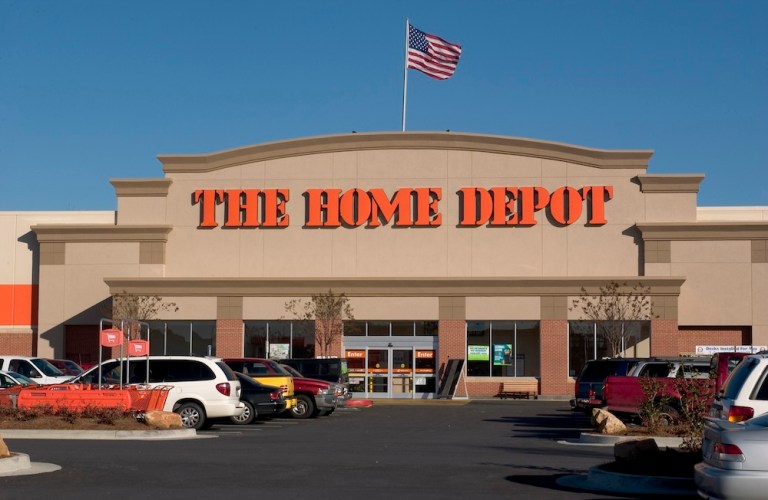
While much of physical retail struggled in 2017 from rapidly realigning consumer shopping habits, the team at Home Depot had an incredibly solid year, with same-store sales growing each quarter and a stock price that surged 42 percent.
Despite retail’s slump, the stock market did well in 2017. Consequently, some of Home Depot’s strength came from the overall strength of the market. The Dow grew an average of 25 percent during that time period, meaning the Atlanta-based home improvement chain’s performance nearly doubled.
It was, by all accounts, a good year — pushed by a strengthening economy, a warming eCommerce market and and an emerging generation of millennial homeowners suddenly in need of do-it-yourself home improvement supplies.
But the good times of 2017 were not an inducement for self-congratulation so much as they were a push for enhanacement, according to the firm’s CEO.
“The retail landscape is changing at unprecedented rates, and we plan to invest for the future to address the evolving needs of our customers,” Craig Menear, Home Depot’s chairman, CEO and president, noted in December when Home Depot announced an upcoming $11.1 billion investment in improvements across the brand.
Those investments, according to Menear, will be spread out across the board: store layout, staff training, flexible work/pay schemes, a streamlined point-of-sale checkout experience, online and mobile shopping options, supply chain logistics — it’s all on the table for renovation and improvement.
According to their CEO, it’s smart to strike while the iron is hot: The retailer is coming off eight years of expansion.
Positioning Against a Downturn…
When the recession hit about a decade ago, every retailer was affected. However, Home Depot was hit especially hard. Since it was real estate that had tanked the economy, the market more or less froze solid for all but the well-capitalized.
And no real estate market — not to mention the wave of foreclosures that culled the national homeownership rolls — was like a stake through the heart of Home Depot’s sales. Its stock price was bludgeoned (as was expected).
But where other retail executive teams might have complained, Home Depot decided to upgrade with an eye toward digital commerce enhancements. Even while the economy was melting down in 2008–2009, Home Depot saw the writing on the wall about what commerce might look like should it ever be nursed back to good health. The brand built out its eCommerce operations, started experimenting with a (now very popular) buy online, pick up in-store option, slowed down building new stores in favor of upgrading the ones it had and began training its staff to be experts in home improvement.
According to Menear, when the market finally began to turn around, consumers were ready to embrace Home Depot once again. That conjecture was born out by the numbers: Home Depot and Lowe’s took similar beatings during the Great Recession, but in the comeback that followed, Home Depot’s same-store sales have grown stronger every quarter. There’s no shame in that game, according to Fortune. The only retailer that came close to Home Depot’s annual same-store sales growth of 6 percent or better for the last several years was Costco.
The recently announced improvements are a hedge against the downturns Home Depot feels are sure to come.
“We didn’t want to waste that time,” Menear noted of the brand’s recent hot streak — because it could quickly come to an end.
A Stumbling Start to 2018
As kind as the markets had been in 2017, the wind’s direction for the next year may not be quite so helpful. The first two months of 2018 have been troublesome on the stock market for almost every publicly traded firm, but Home Depot had an especially rough ride. Its shares are on track for their worst monthly performance since June 2010, and Home Depot is the third-worst performer on the Dow Jones so far in February.
Those surprise January dips in sales paired with data about steadily rising household debt — and the fact that short-term interest rates will likely continue to rise over the course of the year (thus raising the cost of borrowing for things like mortgages and credit) — have some market watchers concerned about what 2018 will look like across a variety of segments in retail. And because Home Depot’s fate is tied so closely to the real estate market, it’s attracting particular interest.
But Home Depot said it’s ready to weather any storm. It’s invested (and will continue to invest) to protect itself from an unpredictable future.